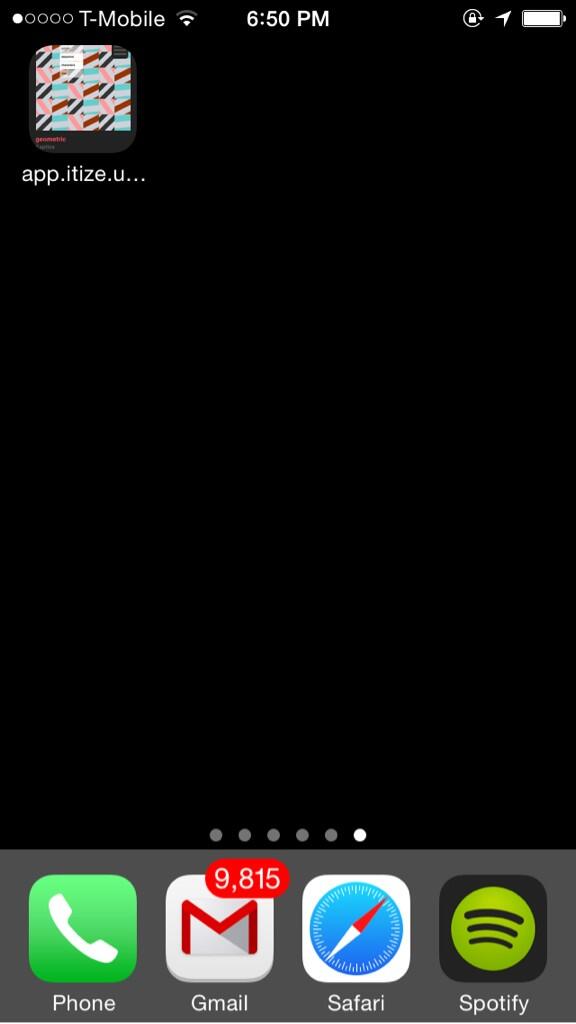Sep 10, 2017 Chris Hoffman is Editor in Chief of How-To Geek. He's written about technology for nearly a decade and was a PCWorld columnist for two years. Chris has written for The New York Times, been interviewed as a technology expert on TV stations like Miami's NBC 6, and had his work covered by news outlets like the BBC. 1-800-982-3676 or Email Us For Price: Quantity: bookmarks Add to Cart. Weight Chart Comparison. Bookmarks Per Sheet: 5 (microperfed for easy separation) Bookmark Size: 2.2' X 8.5' Weight: 216 GSM Thickness: 8.9.
A bookmarklet is a bookmark stored in a web browser that contains JavaScript commands that add new features to the browser. Bookmarklets are unobtrusive JavaScripts stored as the URL of a bookmark in a web browser or as a hyperlink on a web page. Bookmarklets are usually JavaScriptprograms. Regardless of whether bookmarklet utilities are stored as bookmarks or hyperlinks, they add one-click functions to a browser or web page. When clicked, a bookmarklet performs one of a wide variety of operations, such as running a search query or extracting data from a table. For example, clicking on a bookmarklet after selecting text on a webpage could run an Internet search on the selected text and display a search engine results page.
Bookmarks Apps Official Applications. There are no official Bookmarks apps made by Pocket at this time. Jan 09, 2018 Bookmark App. Toasty Planet Games Tools. Add to Wishlist. This app makes it so that you can add all of your favorite websites to one unique page. Free bookmark templates featuring animals, holiday themes, and more. Each template is available as a PDF download. PAGE 3.

Another name for bookmarklet is favelet or favlet, derived from favorite.[1]
History[edit]
Steve Kangas of bookmarklets.com coined the word bookmarklet[2] when he started to create short scripts based on a suggestion in Netscape's JavaScript guide.[3] Before that, Tantek Çelik called these scripts favelets and used that word as early as on 6 September 2001 (personal email[clarification needed]). Brendan Eich, who developed JavaScript at Netscape, gave this account of the origin of bookmarklets:
They were a deliberate feature in this sense: I invented the javascript: URL along with JavaScript in 1995, and intended that javascript: URLs could be used as any other kind of URL, including being bookmark-able.In particular, I made it possible to generate a new document by loading, e.g. javascript:'hello, world', but also (key for bookmarklets) to run arbitrary script against the DOM of the current document, e.g. javascript:alert(document.links[0].href). The difference is that the latter kind of URL uses an expression that evaluates to the undefined type in JS. I added the void operator to JS before Netscape 2 shipped to make it easy to discard any non-undefined value in a javascript: URL.
The increased implementation of Content Security Policy (CSP) in websites has caused problems with bookmarklet execution and usage (2013-2015),[5] with some suggesting that this hails the end or death of bookmarklets.[6][7] William Donnelly created a work-around solution for this problem (in the specific instance of loading, referencing and using JavaScript library code) in early 2015 using a Greasemonkey userscript (Firefox / Pale Moon browser add-on extension) and a simple bookmarklet-userscript communication protocol.[8] It allows (library-based) bookmarklets to be executed on any and all websites, including those using CSP and having an https:// URI scheme. Note, however, that if/when browsers support disabling/disallowing inline script execution using CSP, and if/when websites begin to implement that feature, it will 'break' this 'fix'.
Concept[edit]
Bookmark App 1 7 6 4 1 X 10
Web browsers use URIs for the href attribute of the <a> tag and for bookmarks. The URI scheme, such as http:, file:, or ftp:, specifies the protocol and the format for the rest of the string. Browsers also implement a prefix javascript: that to a parser is just like any other URI. Internally, the browser sees that the specified protocol is javascript, treats the rest of the string as a JavaScript application which is then executed, and uses the resulting string as the new page.
The executing script has access to the current page, which it may inspect and change. If the script returns an undefined type (rather than, for example, a string), the browser will not load a new page, with the result that the script simply runs against the current page content. This permits changes such as in-place font size and color changes without a page reload.
An anonymous function that does not return a value, define a function, etc., can be used to force the script to return an undefined type:
However, if a script includes a function definition/redefinition, such as functionUse_this_globally(){...}, the environment will not be populated with it. For this reason an {arbitraryscript} should be wrapped in void(...);.
Usage[edit]
Bookmarklets are saved and used as normal bookmarks. As such, they are simple 'one-click' tools which add functionality to the browser. For example, they can:
- Modify the appearance of a web page within the browser (e.g., change font size, background color, etc.)
- Extract data from a web page (e.g., hyperlinks, images, text, etc.)
- Remove redirects from (e.g. Google) search results, to show the actual target URL[9]
- Submit the current page to a blogging service such as Posterous, link-shortening service such as bit.ly, or bookmarking service such as Delicious
- Query a search engine or online encyclopedia with highlighted text or by a dialog box
- Submit the current page to a link validation service or translation service
- Set commonly chosen configuration options when the page itself provides no way to do this
- Control HTML5 audio and video playback parameters such as speed, position, toggling looping, and showing/hiding playback controls[10][11][12]
Installation[edit]
'Installation' of a bookmarklet is performed by creating a new bookmark, and pasting the code into the URL destination field. Alternatively, if the bookmarklet is presented as a link, under some browsers it can be dragged and dropped onto the bookmark bar. The bookmarklet can then be run by loading the bookmark normally.
In Microsoft Edge, it is not possible to add a bookmarklet to your favourites, instead right-click on the link and choose 'Add to reading list'. The bookmarklet can then be run by clicking on it in the reading list. In Microsoft Edge the reading list is in favourites and is opened using the icon that is a pile of lines.
Example[edit]
This example bookmarklet performs a Wikipedia search on any highlighted text in the web browser window. In normal use, the following JavaScript code would be installed to a bookmark in a browser[13] bookmarks toolbar. From then on, after selecting any text, clicking the bookmarklet performs the search.
Bookmarklets can modify the location, e.g. to save a web page to the Wayback Machine,

Open a new web browser window or tab, e.g. to show the source of a web resource if the web browser supports the view-source URI scheme,
Show info related to the current URL, e.g.,

among other things.
See also[edit]
References[edit]
- ^Jonathan Avila (2014-03-02). 'How to create a favlet for accessibility testing'.
- ^Domain bookmarklets.comArchived 2009-07-07 at the Wayback Machine registered 9 April 1998
- ^'Activating JavaScript Commands From the Personal Toolbar'. What's New in JavaScript 1.2. Netscape Communications Corporation. 1997. Archived from the original on 2002-06-11.
- ^Willison, Simon (April 10, 2004). 'Email from Brendan Eich'. SitePoint. Retrieved September 26, 2014.
- ^'Bug 866522 - Bookmarklets affected by CSP'.
- ^'Bookmarklets are Dead'.
- ^'The Slow Death of Bookmarklets'.
- ^'The Resurrection of Bookmarklets'.
- ^Ruderman, Jesse. 'Bookmarklets for Zapping Annoyances'. Jesse's Bookmarklets Site. Retrieved 29 March 2013.
- ^'YouTube Video Speed Bookmarklets'. sgeos.github.io. 2017-10-29.
- ^Kant, Kushal (23 August 2017). 'How to Use Parameters in HTML5 Video Tags/Attributes'. findnerd.
- ^'HTML video Tag'. www.w3schools.com.
- ^Tested on Mozilla Firefox, Opera, Safari, and Chrome. Does not work in IE7 or IE8. Original source: Alex Boldt
External links[edit]
App 1 Auto Finance
- Calishain, Tara (Feb 3, 2004). 'Bookmarklets Boost Web Surfing'. PC Magazine. Retrieved Aug 31, 2007.
Bookmark App 1 7 6 4
